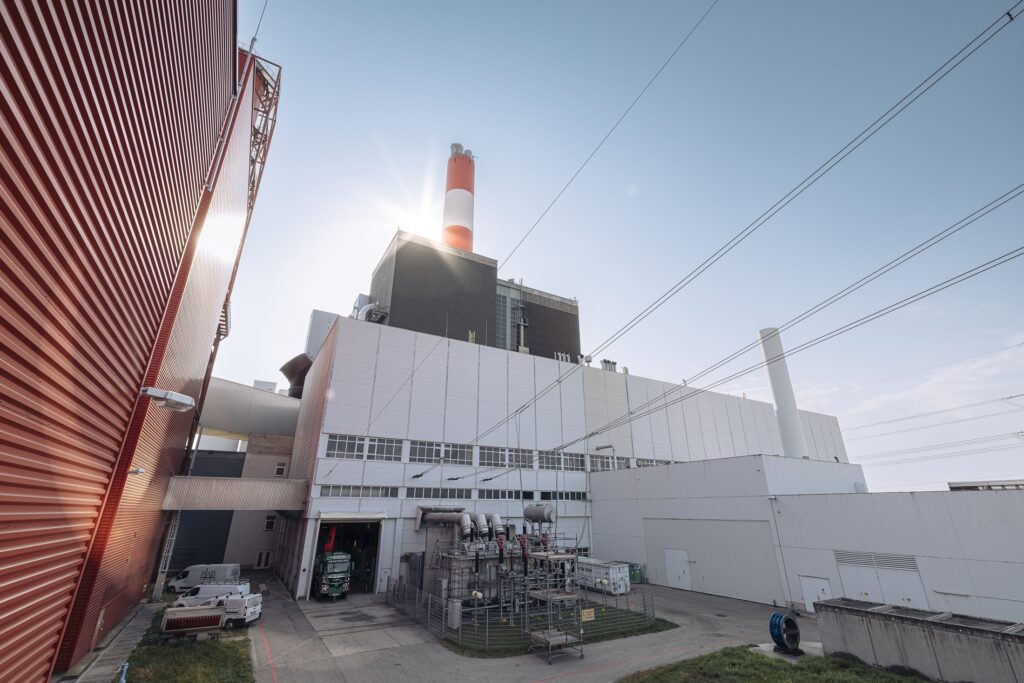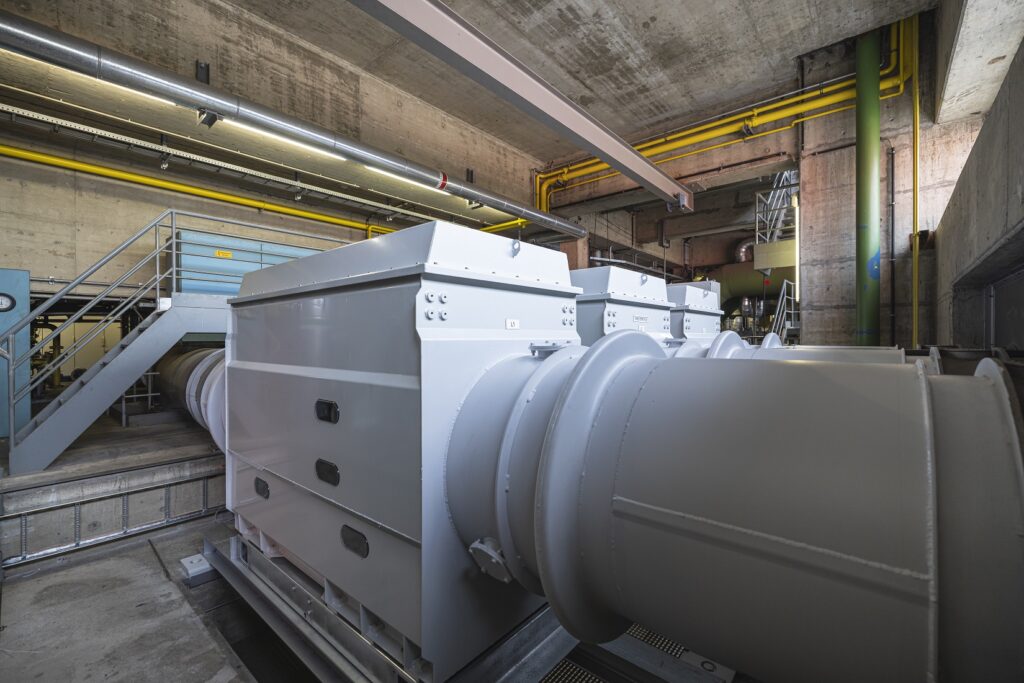Customized retrofit
Precise replacement of the generator circuit breaker for the EVN power plant in Theiß with an SF6-free Net-Zero product from Siemens.
 © Siemens
© Siemens
Precise replacement of the generator circuit breaker for the EVN power plant in Theiß with an SF6-free Net-Zero product from Siemens.

The Theiß power plant, located in the Lower Austrian cadastral municipality that gives it its name, is a thermal power plant. With a rated output of 800 megawatts (MW), the plant, which was built in the early 1970s and has been modernized several times since then, is EVN AG’s most powerful and largest power plant. The thermal power plant, which is primarily operated with natural gas, performs several tasks for the nationally and internationally active, listed electricity, gas and energy supplier EVN, which is majority-owned by the state of Lower Austria: On the one hand, the combined cycle unit B is responsible for overall electricity grid support, i.e. the power plant is responsible for security of supply in the event of bottlenecks at hydro and wind power plants. On the other hand, the district heating generation unit and Europe’s largest district heating storage facility contribute to supplying heat to the city of Krems and the municipality of Gebersdorf. Finally, the power plant also provides reserve capacity for the German electricity grid as a result of Germany’s nuclear phase-out.
 © Siemens
© SiemensThe circuit breaker was adapted for installation and mounted on steel girders.
While the power plant was last upgraded in 2020 with a 240 MW gas turbine purchased from Norway and subsequently refurbished, the decision was made to replace the compressed air switchgear in 2024. “The existing generator switchgear of the steam turbine was getting on in years and had reached the end of its life,” confirms Gerhard Lemp, Head of Measurement and Control Technology at EVN Wärmekraftwerke, adding: “Continued operation would not have been profitable due to significantly rising maintenance costs, the associated decline in availability and security of supply and the increasingly problematic procurement of spare parts – the plant dates back to 1977.” A maintenance-free, environmentally friendly and energy-efficient solution was sought through a call for tenders, which could also do justice to the limited space and installation conditions in the power plant.
Siemens was ultimately awarded the contract for the tendered turnkey project to replace, supply, install and commission a new generator switchgear. “Compared to conventional models, the Siemens HB3 generator circuit breaker is not based on SF6 switching gas, which is extremely harmful to the climate in the event of a leak. Instead, vacuum tubes are used here,” explains Thomas Idinger, Sales Specialist Electrification & Automation at Siemens, and continues: “Vacuum switches are also virtually maintenance-free over the entire service life of 20,000 switching cycles because the relatively high contact erosion that is characteristic of SF6 systems is eliminated.” In addition to environmental friendliness, efficiency and de facto freedom from maintenance, the dimensions of the HB3 generator circuit-breaker also played a key role in the award of the contract. “Due to its compact dimensions, the HB3 switch is ideal for retrofits, where there are usually two additional challenges: on the one hand, the installation, which is to be carried out without major structural changes to the existing structures, and on the other hand, the installation in a usually limited space, which is also dictated by the existing structures,” says Idinger.
At the Theiß power plant, the single-phase encapsulated generator switch was lifted to its destination using a telescopic crane – with little room to maneuver and therefore with extreme precision past process pipelines and existing building structures. Further adaptations to the HB3 switch were required in advance to enable it to be welded precisely to the existing trunking: These included mounting on the I-beams below without the otherwise standard feet of the switching poles and the spatial separation of the control cabinet, which is usually directly attached. “By customizing our already very compact generator circuit breaker, we were able to install, set up and integrate the HB3 switching poles, each weighing 1.44 tons, into the power plant within a very short time and without any significant adjustments to the surrounding structures,” explains Thomas Idinger, who was able to report smooth commissioning just a few weeks later together with Gerhard Lemp.
“With the completion of the turnkey installation, the Theiß power plant now has a state-of-the-art generator circuit breaker, which is characterized by a high shutdown capacity and fast switching times. This provides optimum protection for the underlying systems and thus ensures security of supply,” says Gerhard Lemp, summarizing the successful outcome of the project. As well as the significant increases in efficiency and availability, the sustainability aspects are also of great importance to Lemp: “With the conscious decision to not use a switchgear system operated with SF6 switching gas, we as EVN are also sending a clear signal in terms of climate protection at our thermal power plants. Our commitment to sustainability also manifests itself directly in our new generator switchgear: the HB3 is a Net-Zero product, i.e. it was manufactured in a CO2-neutral way. Our solution is therefore a shining example of how high availability, efficiency and sustainability are not mutually exclusive.”
In addition to hi!tech digital, the magazine is also available as a printed edition twice a year.